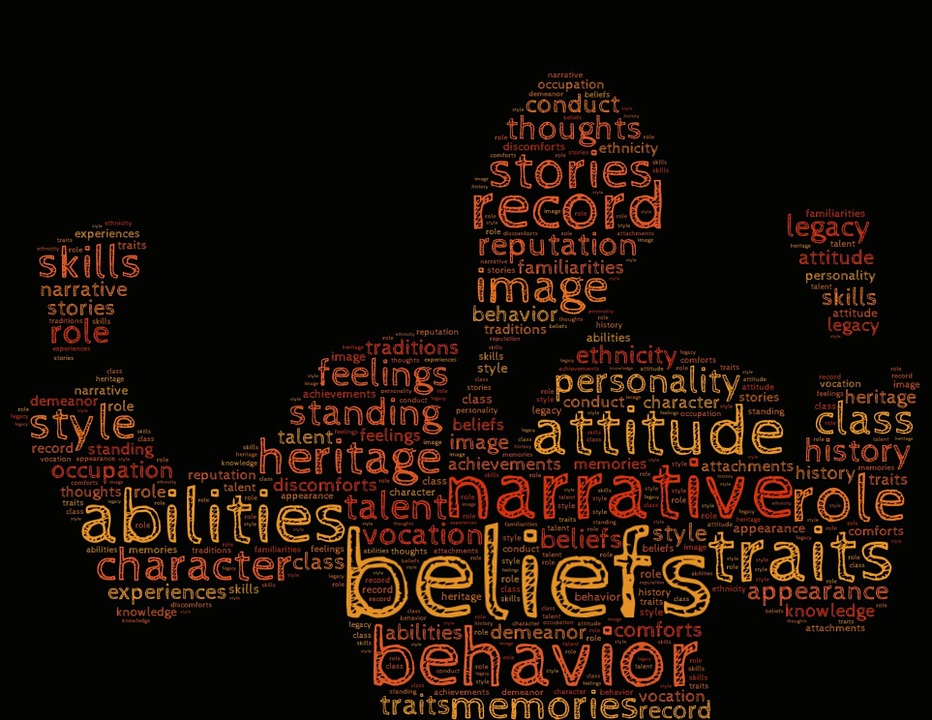How can we integrate our personality integration using yama and niyama?
- Our personality (svatantra) is based on our sense of self-worth (asmitā). This personality is developed from how we view the world, how we process the feedback from our actions and our sense of Self.
- Our sense of self-worth (asmitā) changes with each situation; when we experience praise, our sense of Self expands. However, when we experience criticism or depreciation, our sense of Self contracts.
- Therefore, our sense of Self depends completely on the environment for its existence. But, to get the attention of the environment, we need to manifest our identity or personality.
- This means that, our sense of Self (asmitā) and our manifestation of our Self or personality (svabhāva) are interlinked. One cannot exist without the other. Without our sense of Self, there can be no manifestation. Similarly, without manifestation, our sense of Self cannot exist.
 Our first experience is fear of existence, that no one will acknowledge us. When someone acknowledges us, we immediately experience happiness. We immediately try and forge a bond with whoever acknowledges us. In fact, we try to maintain the relationship even if we are not happy, because we are afraid of losing the acknowledgement of existence which the relationship provides.
Our first experience is fear of existence, that no one will acknowledge us. When someone acknowledges us, we immediately experience happiness. We immediately try and forge a bond with whoever acknowledges us. In fact, we try to maintain the relationship even if we are not happy, because we are afraid of losing the acknowledgement of existence which the relationship provides.- Any bond is based on the principle of “give and take” or “stimulus-response”.
- Whenever we get a stimulus from another entity, we check it against our “value-system” or “conditioning” (dharma).
- If the stimulus is in congruence with our conditioning (dharma), then we try to bring the source closer to experience more congruence (rāga). However, if the stimulus is opposed to our conditioning, we try to push the source away (dveṣa). This movement between us and the object is called action (karma).
School of Yoga explains personality development.
Example: Even though we may not be able to get along with our boss, we may have no choice but to continue working in the company until we find an alternative. However, our output will be severely hampered because much of our energy will be used in overcoming our dislike of the boss. However, should the boss change to one we like, then the output will change dramatically.
- Importantly, once a bond is established, our ability to stay and function in the relationship will determine the extent of peace we experience with the relationship, in our environment and within our own personality.
Hence, this means that we need to harmonise two aspects of our personality –
- our ability to receive, absorb, assimilate and respond to stimulus which is called (yama) or behaviour control and
- our ability to ensure greater awareness of our sense of Self, our conditioning and harmonising it with our actions, which is called (niyama) or awareness harmony.
Yama has 6 elements: ahiṃsā (non-violence), satya (truth or integrity), asteya (non-stealing), aparigrāhya (renouncing possessions), brahmacaryam (sexual continence), and mitāhāra (diet control).
Niyama has 6 elements: śaucam (hygiene), santoṣam (contentment), svādhyāyam (introspection), tapas (austerity), śraddhā (dedication), and dānam (charity).
Can we develop an integrated personality development?
- How do you relate in difficult relationships?
- What are the important factors which make a relationship successful?
- What is the importance of discrimination (vivekam) and detachment (vairāgyam) in difficult situations?
- How does one’s sense of identity impact one’s conditioning and behaviour?
Now, step back a bit, look at elements of both aspects (yama and niyama) and imagine the personality changes which we would acquire if all the above elements were integrated into our lives.
- First, our awareness (prajñā) gets heightened.
- Next, we become accessible.
- We constantly exude a sense of peace. This attracts people to us.
- Our ability to resolve all types of conflicts goes up.
The best this that this theory has been tried and tested for about 3000 years old and free!
All it requires is usage and sensitivity to feedback. Whenever, we receive feedback, we must apply these 12 rules and then find a resolution.
As the lessons get imbibed, there is greater experience of harmony with the environment, with our own decisions and ability to handle outcomes, reactions and fall-outs.
We will generally experience three levels of awareness,
- jāgrat – awareness of how conditioning is limiting our performance in any situation,
- svapna – purging of residual images from the situation and those of fear, anxiety and anger,
- suṣupti – an intuition which goes beyond form.
Points to Ponder on dedication (śraddhā).
Internal Tags: Karma, Dharma (conditioning), Stress and Situational Awareness, Stress and prana, Awareness measures, Bhakti Yoga fundamentals, Jnana Yoga, Karma Yoga, Hatha Yoga and Raja Yoga.
External Tags: Consciousness
- Why is personal development so difficult?
- Is ambition good or bad? When does ambition become an illness?
- How important are friends to conditioning? Can one become a champion, if one were to keep company with the champions?
- How important is discussion of for personal development?
- Can a guru, master, mentor or coach make a difference? What role can they play in our development?
- To get to the level of intuition, we need lots of experience. This can be painful. Does this mean that there is no painless way to development? That one has to act, make mistakes, correct, face criticisms, reversals and fear before one feels a harmony with the environment?
- Inaction is also action. Even when not doing, we are allowing action to happen. Comment.


